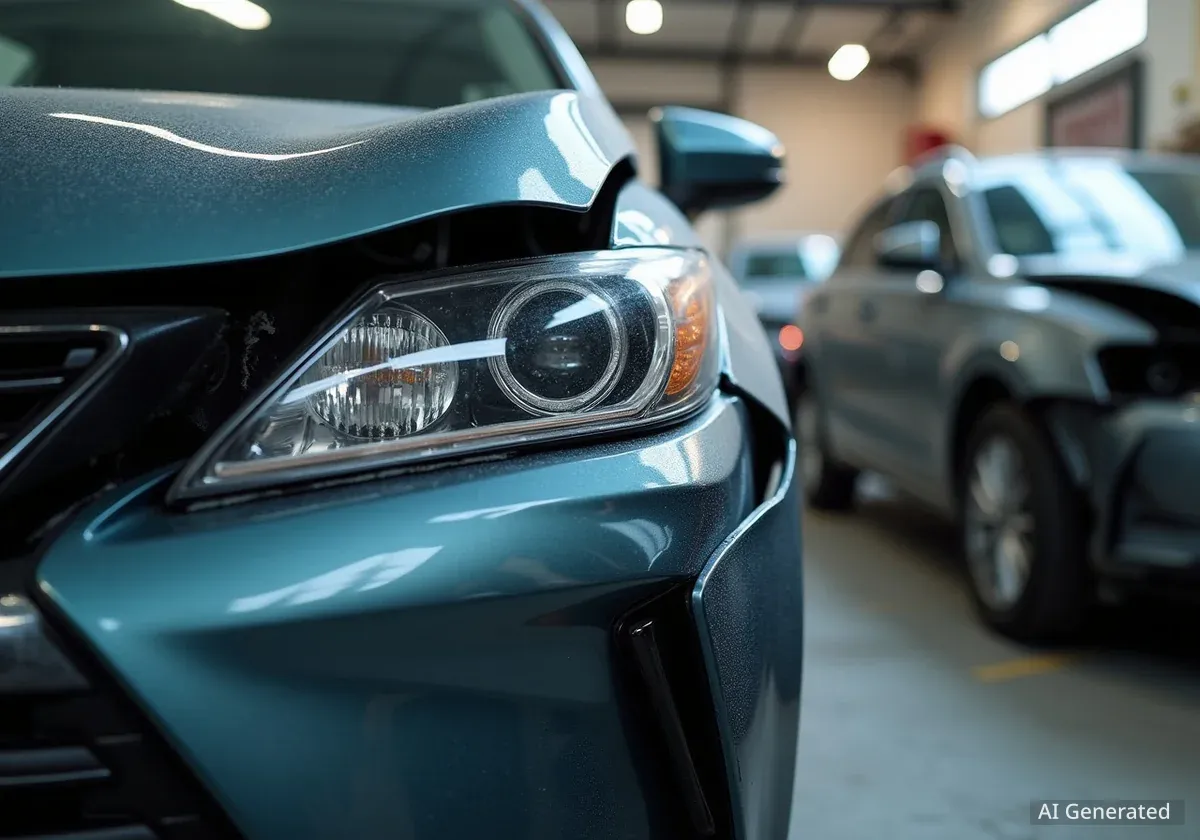Car insurance costs in the United States have increased dramatically, with premiums rising more than 22% over the past year. This significant jump marks the largest annual increase in nearly five decades, placing a substantial financial burden on millions of American drivers.
Several factors are contributing to this surge, including the rising cost of vehicle repairs, an increase in accident frequency and severity, and the growing impact of severe weather events. These elements have created a challenging environment for both insurance companies and their customers.
Key Takeaways
- Motor vehicle insurance premiums rose 22.2% from March 2023 to March 2024, according to the U.S. Bureau of Labor Statistics.
- Higher costs for parts, labor, and advanced vehicle technology are making car repairs more expensive than ever.
- An increase in post-pandemic driving has led to more frequent and severe accidents, resulting in larger insurance claims.
- Climate change is contributing to more weather-related vehicle damage from events like floods and hail, increasing comprehensive claims.
The Scale of the Insurance Rate Hike
The latest data from the Consumer Price Index (CPI) reveals a stark reality for vehicle owners. The 22.2% year-over-year increase in motor vehicle insurance is one of the most significant jumps recorded for any consumer category. This rate of inflation far outpaces the general inflation rate, which stood at 3.5% for the same period.
This means that while the cost of many goods and services has stabilized or risen modestly, car insurance has become a major pain point in household budgets. For the average driver, this could translate to hundreds or even thousands of dollars in additional annual expenses.
According to Bankrate's 2024 analysis, the average cost of full coverage car insurance in the U.S. is now $2,543 per year, which is a 26% increase from the previous year's average of $2,014.
The sharp rise reflects a period of adjustment for the insurance industry. Insurers are passing on higher operational costs to consumers after several years of reporting significant losses in their auto insurance divisions. These companies point to a perfect storm of economic pressures that have made insuring vehicles more expensive.
Primary Factors Driving Up Premiums
The surge in car insurance premiums is not due to a single cause but rather a combination of interconnected economic and social trends. Understanding these drivers is key to grasping why costs have escalated so quickly.
Inflation and Rising Repair Costs
General inflation has a direct impact on the auto insurance industry. The cost of everything from spare parts to labor has increased. Modern vehicles are equipped with sophisticated technology, such as sensors, cameras, and advanced driver-assistance systems (ADAS). While these features improve safety, they are expensive to repair or replace.
For example, a simple windshield replacement on a newer car can cost over $1,500 due to the need to recalibrate cameras and sensors embedded in the glass. Similarly, a minor fender bender can damage sensitive electronic components, turning what was once a simple cosmetic fix into a complex and costly repair.
"The complexity of modern vehicles is a double-edged sword. The technology that keeps us safe also drives up the cost of claims significantly. A bumper is no longer just a piece of plastic; it's a hub for sensitive electronics."
Increased Accident Frequency and Severity
As driving patterns returned to pre-pandemic levels, so did the number of accidents on the road. However, industry data suggests that accidents are not only more frequent but also more severe. Factors such as distracted driving, higher speeds, and more congested roads contribute to this trend.
More severe accidents lead to more extensive vehicle damage and, tragically, more serious injuries. This results in higher claim payouts for both property damage and medical expenses, which insurers then factor into their premium calculations.
What is a Loss Ratio?
In the insurance industry, the "loss ratio" is a critical metric. It represents the ratio of total losses incurred (claims paid) to the total premiums earned. A loss ratio above 100% means an insurer is paying out more in claims than it is collecting in premiums, leading to financial losses that often result in future rate hikes.
Impact of Severe Weather Events
Climate change has led to an increase in the frequency and intensity of severe weather events across the country. Hurricanes, floods, wildfires, and hailstorms are causing unprecedented levels of vehicle damage. These events trigger a large volume of comprehensive insurance claims in affected areas.
When a major hailstorm or flood damages thousands of vehicles in a single region, local insurers face massive payouts. To remain solvent and prepare for future catastrophic events, companies often raise rates not just locally but across the entire state to spread the risk.
Geographic Differences in Insurance Costs
Where you live has a significant impact on how much you pay for car insurance. Rates can vary dramatically from one state to another, and even between zip codes within the same city. This is due to differences in state regulations, population density, crime rates, and weather patterns.
Most Expensive States for Car Insurance
States with high population density, severe weather risks, or high rates of litigation tend to have the highest insurance costs. According to recent reports, some of the most expensive states include:
- Florida: Prone to hurricanes and flooding, with a high rate of insurance fraud and litigation.
- Louisiana: Also faces significant hurricane risk and has a high number of uninsured drivers.
- New York: High cost of living, dense urban traffic, and high repair costs contribute to expensive premiums.
- California: Experiences everything from wildfires to dense traffic and high vehicle theft rates.
Most Affordable States for Car Insurance
Conversely, states with more rural populations, less severe weather, and lower repair costs tend to offer more affordable insurance. States like Vermont, Idaho, and Maine often have some of the lowest average premiums in the nation.
Strategies for Consumers to Reduce Costs
While the overall trend is rising costs, drivers are not entirely powerless. There are several steps consumers can take to potentially lower their car insurance bills.
- Shop Around and Compare Quotes: Don't automatically renew your policy without checking other options. Experts recommend comparing quotes from at least three different insurers every year, as rates for the same coverage can vary by hundreds of dollars.
- Increase Your Deductible: A deductible is the amount you pay out of pocket before your insurance coverage kicks in. Raising your deductible from $500 to $1,000 can lower your premium by 15% to 30%. However, make sure you can afford the higher deductible in case of a claim.
- Ask About Discounts: Insurers offer a wide range of discounts. These can include savings for being a safe driver, bundling auto and home policies, being a good student, or having safety features in your vehicle. Always ask your agent what discounts you qualify for.
- Maintain a Good Credit Score: In most states, insurers use a credit-based insurance score to help determine premiums. A higher credit score is often associated with lower risk, which can lead to better rates.
- Consider Usage-Based Insurance: If you are a safe driver or don't drive very often, a telematics or usage-based insurance program could save you money. These programs use an app or a device to track your driving habits, such as speed, braking, and mileage, to set your rate.
By being proactive and exploring all available options, drivers can find ways to manage the rising cost of car insurance and keep their premiums as low as possible in a challenging market.





